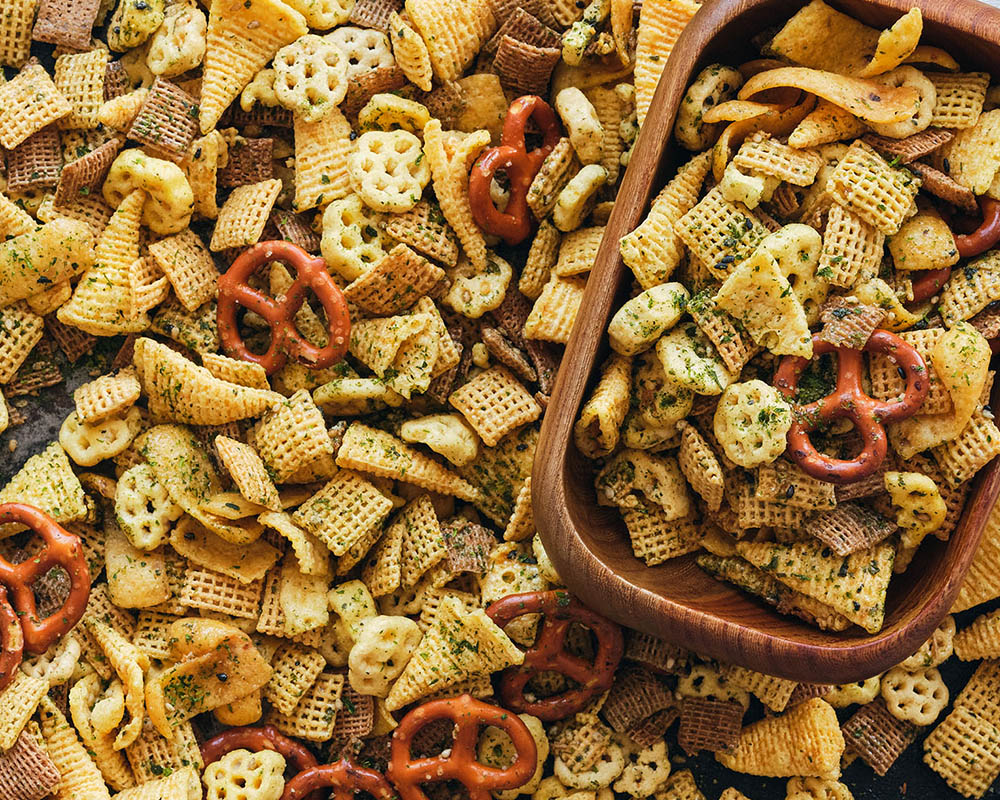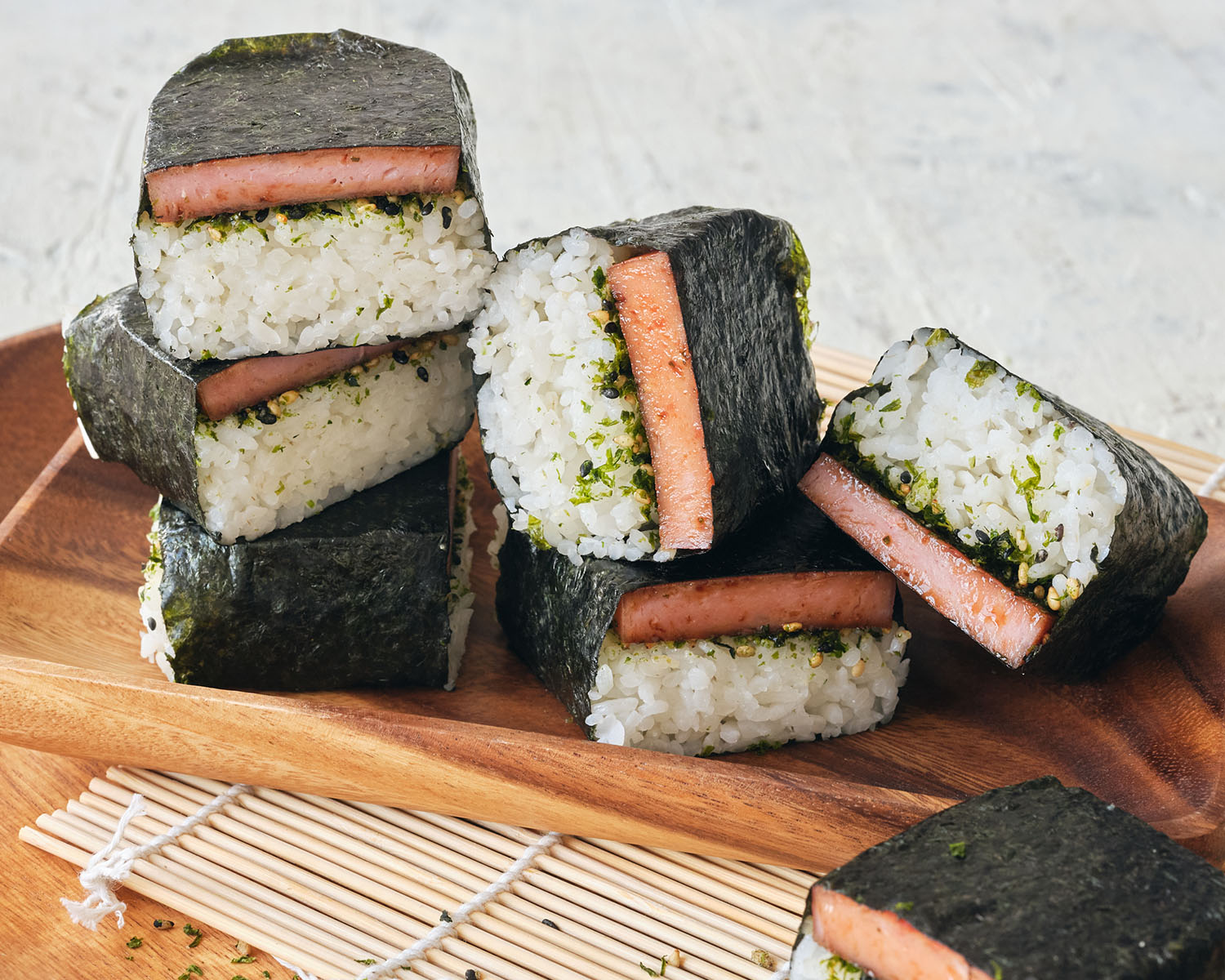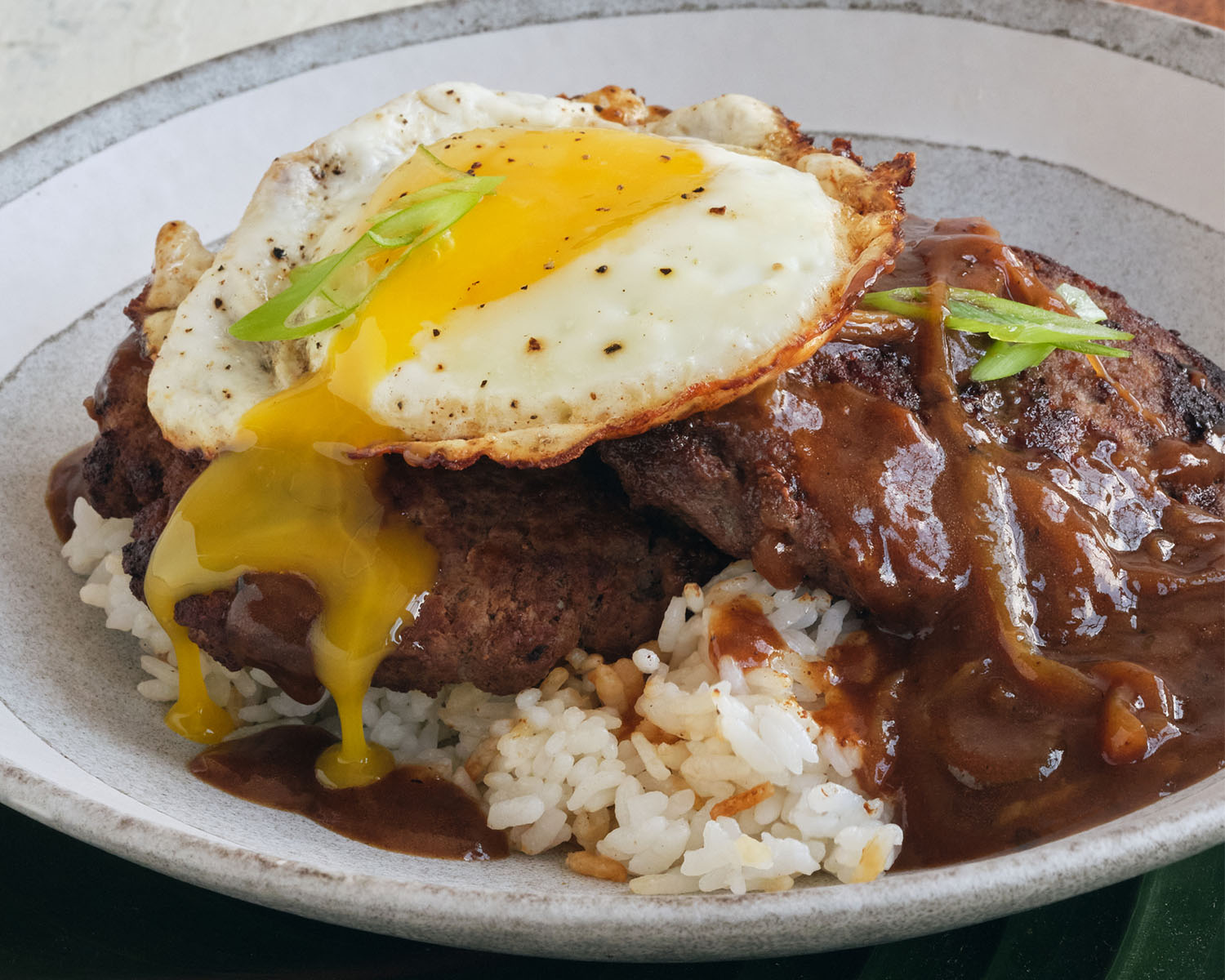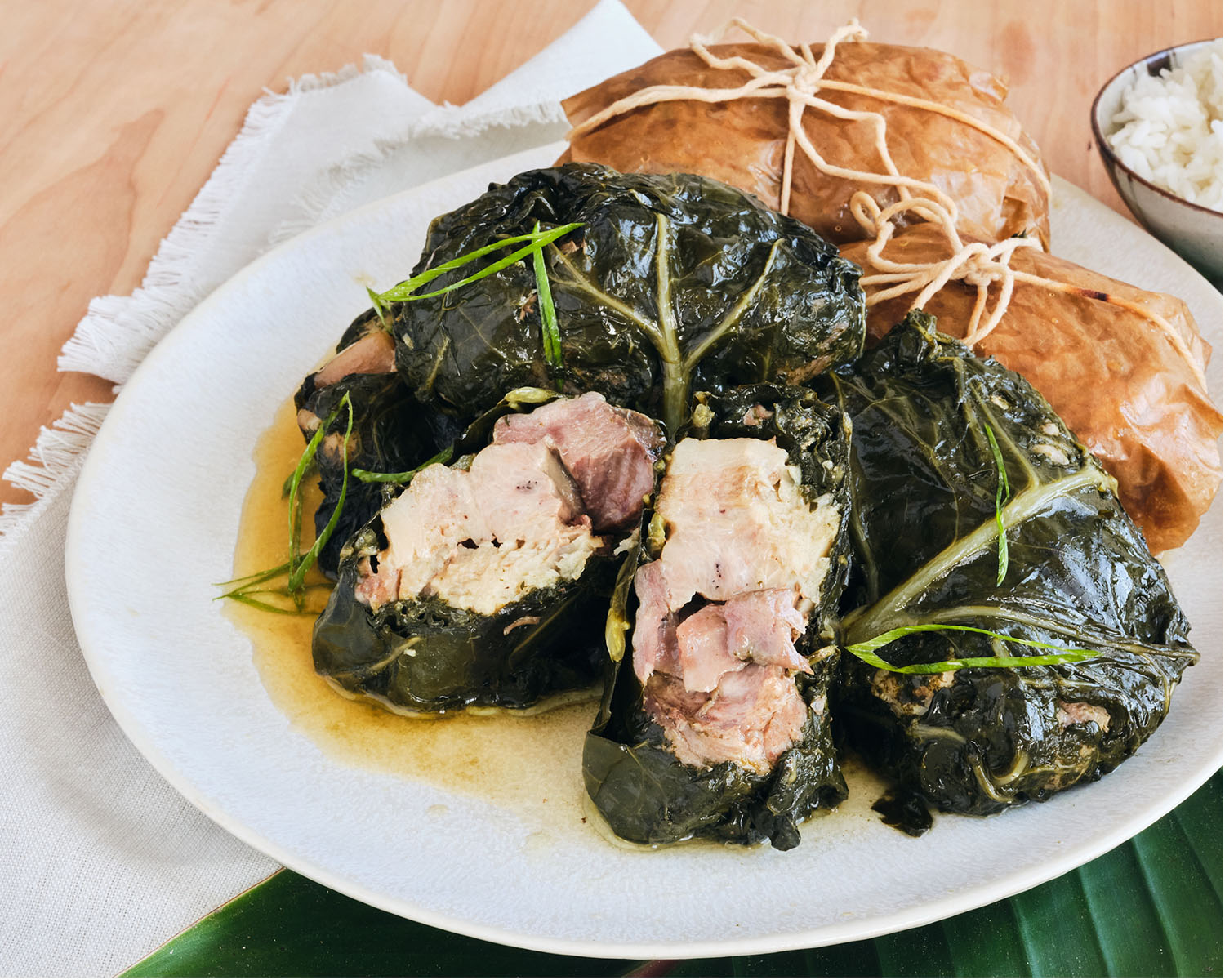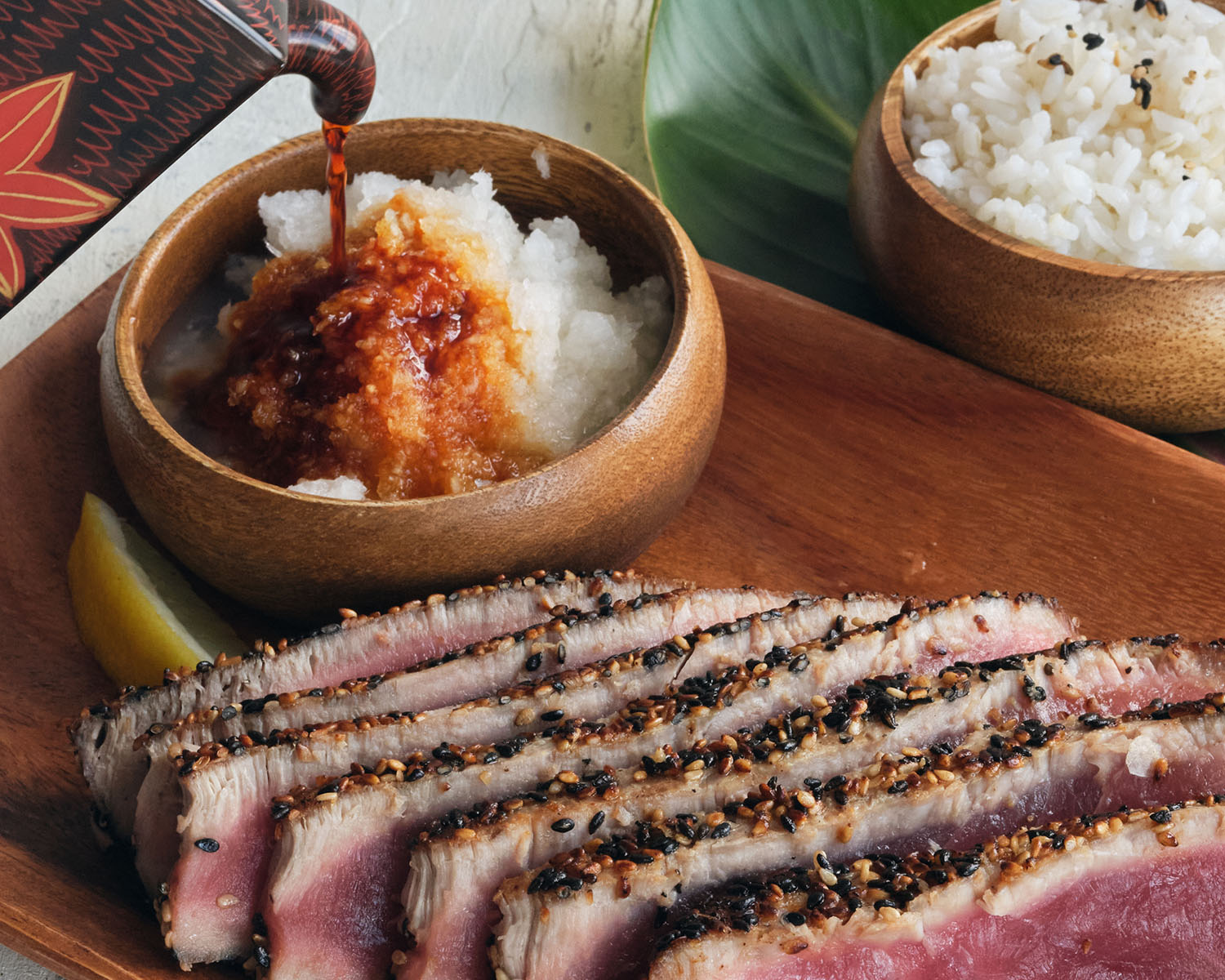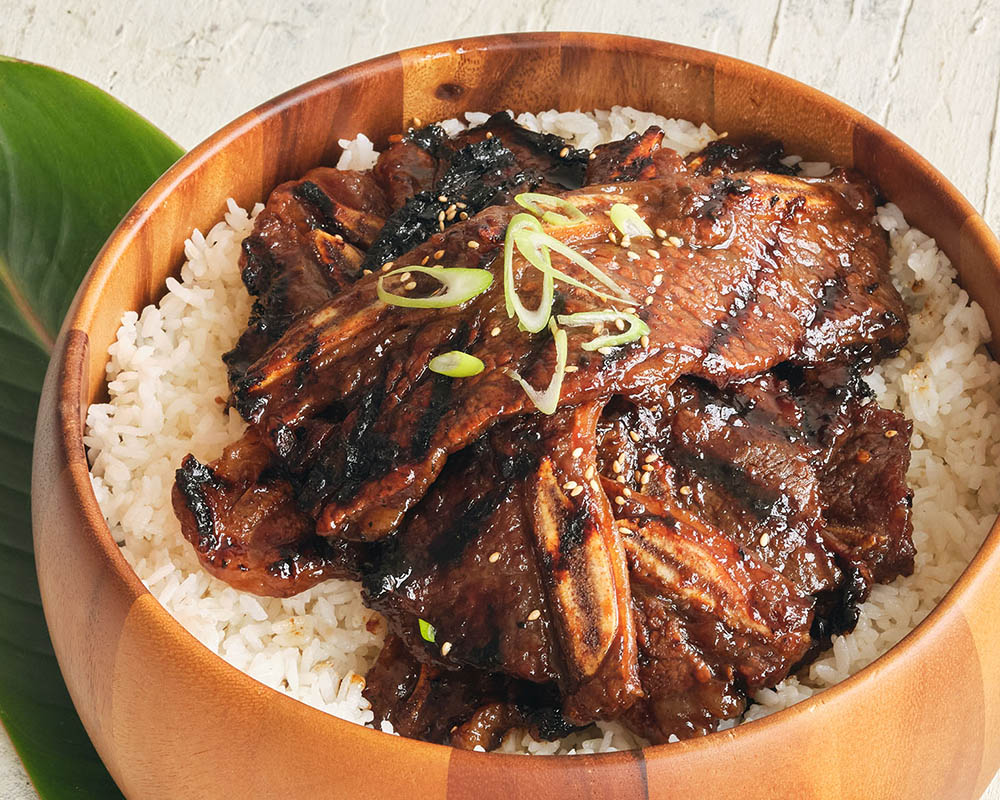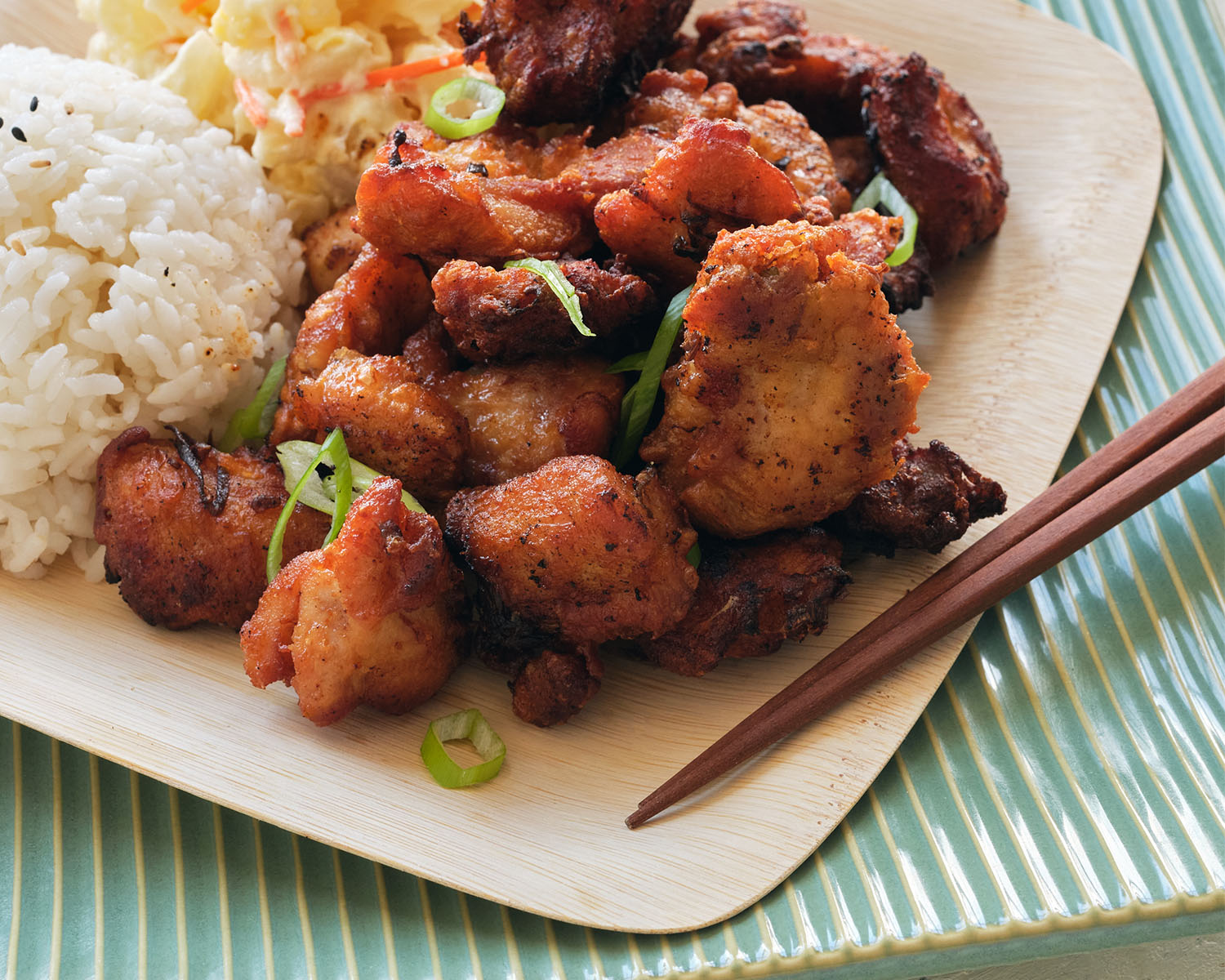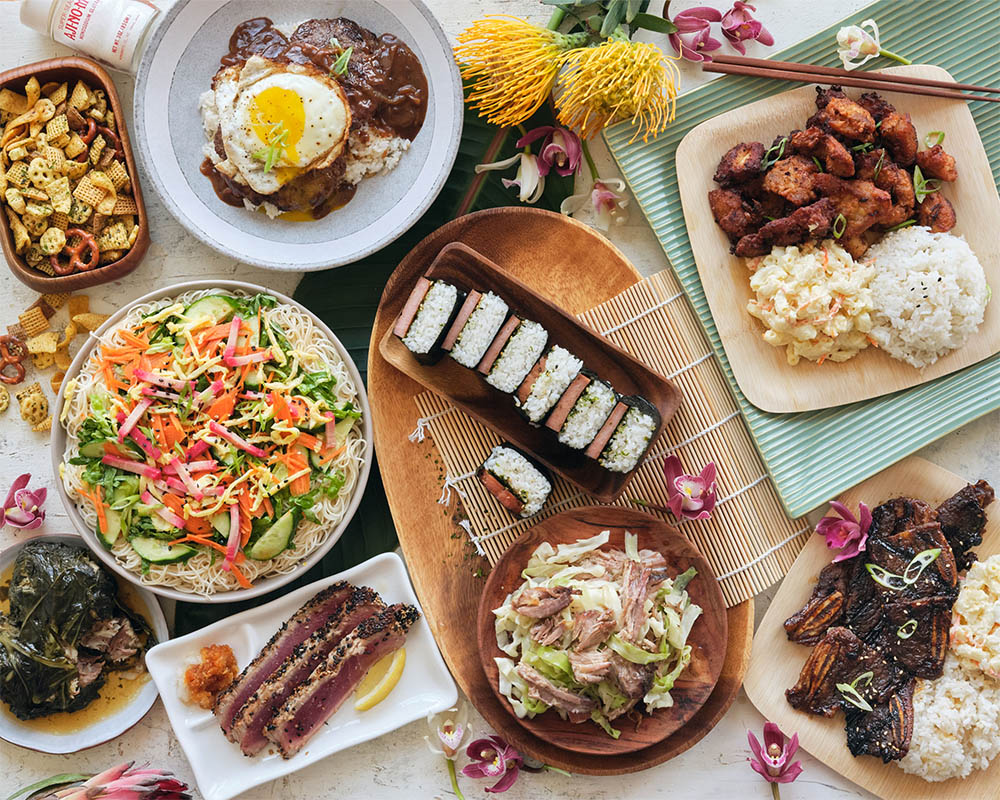
I might be a little biased since I’ve got family over on Oahu, but I’m a firm believer that the food in Hawaii is seriously underrated on the mainland. When you’re away from the islands, whether you call them home or your favorite vacation destination, there are moments when you crave that mouthwatering plate lunch or delicious Hawaiian BBQ you so fondly remember eating on the beach. Hawaii, being right in the middle of the Pacific, boasts a culinary scene that’s truly one-of-a-kind. It blends flavors from all sorts of Asian cuisines and the mainland, resulting in a great fusion of tastes. Now, I could go on and on with a list of over 100 recipes, but let's start with some island staples to help you feel like you’re back on island time.
Furikake Snack Mix
Furikake is a seasoning made from dried seaweed. It comes in different varieties — plain, shrimp, wasabi, plum... It’s often sprinkled on rice or fish, both to give extra flavor and to serve as a garnish. In Hawaii, it’s popular on snacks such as popcorn and this flavorful, sweet-and-salty version of Chex® mix. Honeycomb® cereal and Bugles® corn snacks are traditional components of the mix, but variations abound. Try it with wasabi peas, puffed cheese balls, peanuts, or Goldfish® crackers. The options are endless! This recipe will make enough for a large gathering, perfect for parties and picnics!
Spam Musubi
Okay, we all know this popular canned meat is hit or miss for the general population, but there is no way we would leave this out! Spam was introduced to Hawaii during World War II. Since then, locals have been frying it up and serving it with rice as part of their regular cuisine. They also use it in musubi, which are these awesome salted rice balls that can be plain or filled with tasty treats like salted plums, flaked fish, or the all-time favorite in Hawaii, Spam! Whereas sushi rice is seasoned with salt, sugar, and vinegar, musubi rice is usually just a lightly salt or left plain. Paired with Spam, it’s perfect for packing up as the ultimate picnic food, game-day snack, travel meal, or school lunch. Oh, and if you happen to be in Oahu during the spring, make sure to check out the fantastic Spam Jam event. But don't worry if you can't make it there – all the Hawaii 7-Elevens and Foodlands will definitely have you covered!
Loco Moco
Loco Moco originated in Hilo, Hawaii, at the request of teens wanting an inexpensive, but delicious, alternative to sandwiches. It optimizes a type of cuisine known as Local Kine Grindz — humble comfort foods that are found everywhere on the islands. If you've never tried it, you're in for a treat! Making Loco Moco is a breeze, and to be honest, it was my go-to meal during my college days when my friends were surviving on a steady diet of Top Ramen®. If you're not an egg person, no worries! You can simply go for the variation known as “Hamburger Steak.”
Kalua Pig and Cabbage
Kalua pig is a traditional Hawaiian dish made by roasting a whole pig in a pit underground. Kiawe wood is set on fire, hot lava rocks are added, the pig is seasoned with sea salt, and then it’s covered with banana and ti leaves. Fortunately, we can approximate the original simply by placing salted pork in a slow cooker — no digging required! The cabbage (and rice) helps balance some of the saltiness from the pork. Don’t forget the chili-pepper water (or hot sauce)!
Laulau (Northwest-style)
Traditionally made with taro and ti leaves, our version uses collard greens and other ingredients easier to find on the mainland. The result is just as good as the original, creating tasty parcels of braised meat, fish, and greens. With the use of a pressure cooker, the whole dish cooks up in about an hour.
Tuna with Suri Daikon
Some call it suri daikon, and others, sdaikon suri. Still others call it daikon oroshi. It all refers to the same thing — grated Japanese radish. It’s served as a refreshing condiment with everything from clams to tofu and tempura to katsu. Here, we pair it with fresh tuna crusted in crunchy sesame seeds. The combination is light, bright, and tangy with just a bit of kick. In Hawaii, where tuna is king, my grandmother often made this for the family — rarely with any leftovers.
Kalbi Short Ribs
Kalbi or galbi means ribs in Korean. In the United States, they are almost always cut flaken-style, across the bone. This results in thin strips of meat that cook quickly. Traditional Korean marinades use Asian pear or kiwi to sweeten and tenderize meat. The same marinade used for Bulgogi Beef can be used for kalbi; the difference is in the cut of meat. Hawaii-style kalbi marinade substitutes brown sugar for the fruit. This results in a slightly sweeter taste.
Mochiko Chicken
These are fried chicken chunks coated in sweet rice flour and flavored with a garlic-soy marinade. It’s popular in Hawaii where it is often served with “2 scoops” rice and Hawaii-Style Potato Mac Salad. The chicken packs up well for potlucks and picnics at the beach and is perfect for the keikis (kids).
Potato Mac Salad
Hawaii is known for its “plate lunch.” Rather than mainland fast foods that consist of wrapped sandwiches and fries on the side, Hawaii’s “local food” purveyors quickly serve up hot plates of hamburger steak, teriyaki chicken, and Kalbi Short Ribs — all accompanied with 1-2 scoops of rice and an essential scoop of mac salad. Variations abound, but “local kine” mac salad is usually heavy on Best Foods® mayonnaise and made with extra soft macaroni.
Somen Salad
In Japan, somen noodles are served ice-cold alongside a dipping sauce. In Hawaii, cold somen noodles form the base of a refreshing salad that is easy to prepare in advance and to transport to potlucks. It also pairs perfectly with just about any main dish you’re eating on the island.

